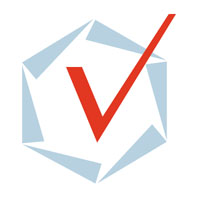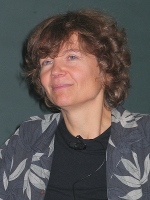|
|
|
Projects and Standardisation Activities
Past
Networks of Excellence
The ARTIST Networks of Excellence (2002-2012) strengthened European research in Embedded Systems Design by
promoting the emergence of this new multi-disciplinary area, and by building a durable European research community on
Embedded Systems Design.
ARTIST gathered key players in the following strategic domains: Modelling and Components, Hard Real-Time,
Adaptive Real-Time, Compilers and Timing Analysis, Execution Platforms, Control for Embedded Systems, Testing and Verification. It took the form of 3 successive European initiatives:
- ARTIST DESIGN IST Network of Excellence (2008-2012):
- where I co-lead with Kim Larsen and Albert Benveniste the cluster Modelling and Validation
- ARTIST2 IST Network of Excellence Real-time embedded Systems (2004-2008):
- where I coordinated the activities concerning the Platform for Component Modelling and Verification
- ARTIST IST Initiative Advanced Real-Time SysTems (2002-2004):
Projects
European projects:
-
SPEEDS Integrated project on Speculative and Exploratory Design in Systems Engineering (2006-2010):
This project aimed at a concerted effort to define the new generation of end-to-end methodologies, processes and supporting tools for safety-critical embedded system design such as to enable European systems industry to evolve from model-based design of hardware/software systems, towards integrated component based construction of complete virtual system models.
The main expected results of the project were a modelling framework based on rich components including the relevant information
for the verification of essential properties and for the generation of platform dependent code. A set of analysis tools support the
design process.
We achieved iinteresting advances on contract-based design for heterogeneous real-time systems.
-
COMBEST STREP project on COMponent-Based Embedded Systems design Techniques (2008-2011):
This project aimed at computational and analytical models for non-functional properties of embedded systems.
The project pursued a dual approach, combining fundamental work with methods and tools for rigorous embedded systems design.
The fundamental work in COMBEST proposed frameworks for the composition of heterogeneous components for achieving component-based design. A major challenge is inferring global properties of a system from the properties of its components.
- ASSERT IST Integrated project on Automated proof based System and Software Engineering for Real-Time (2004-2008):
The main objective of ASSERT was to change the way system and software engineering is performed today to adopt a more reliable and scientific approach based on modelling, preservation of system properties and model transformation down to the final code.
The results includes a process, a set of tool prototypes and case studies demonstrating the validity of the overall approach.
This project was important for the dissemination of our results obtained in the OMEGA project. In particular, we adapted the OMEGA UML profile to describe a system at platform layer and used our IFx tool for validation
- Coordination of the OMEGA IST Project on Correct Development of Real-Time Embedded Systems in UML (2002-2005):
The aim of the project was the definition of a development methodology in UML for embedded and real-time systems
based on formal techniques. The concrete results are
- A UML profile allowing to include timing information with operational design models and with operational or declarative
requirement models. The real-time profile for UML 2, MARTE, has taken over some concepts of the OMEGA UML profile
- A set of analyis and verification tools analysing models conformant to this profile.
- INTERVAL IST Project (2000-2002):
The aim of this project was to propose real-time extension for the ITU standards SDL, MSC and TTCN. Several of the
extensions proposed are today part of the standards.
- ADVANCE IST Project (2000 - 2003):
This project achieved significant advances on the verification of infinite state systems
- VIRES ESPRIT project (Verifying Industrial Reactive Systems, 1997-2000):
one of the main aims of which was the
Verification of a wireless ATM protocol. See also
VIRES Workshop, June 2000 in Autrans
- REACT Eprit-BRA Project (1993-1996):
The aim of this project was foundational work on verification techniques. The result was an
impressive list of publications, and a case study on the verification of a distriuted memory. VIRES was a follow-up project
of REACT.
- SPEC Eprit-BRA Project (1990-1993):
The aim of this project was foundational work on
verification techniques. The result was an impressive list of publications. REACT was the follow-up of this project.
- DELTA-4 Eprit R&D Project(1988-1992):
The aim ofthe project was to show the usefulness of formal design and requirement models. In particular,
the ITU standard Estelle was used for modelling designs and temporal logic was used for the expression of requirements.
Several instances of fault tolerant protocols realising an atomic multicast for different physical architectures have been
used as case studies. We have provided the formal design and requirememnt models and verified them using the
Xesar model-checker.
National projects:
- CTRC on Certified and Configurable Real-Time Components and CASERM on Design and Analysis of Reconfigurable Multi-view Embedded Systems are two related projects funded by the PERSYVAL-Lab Labex (2015-2019):
They representsa significant effort towards a Coq-based design and verification method for reconfigurable multi-view embedded systems.
- French OpenEmBeDD RNTL project An open source platform making available model-based techniques for the development of real-time and embedded systems (2006-2009):
OpenEmbeDD aims at developping an Eclipse-based "Model Driven Engineering" platform dedicated to Embedded and Real-Time systems.
Its aim is to offer engineers who design and develop E/RT software the means to express, simulate, validate and test the targeted system before any component has solded on a circuit board.
In this project, we disseminate the results of the PerSiForm and the SPEEDS project, in particular the tools developed there.
- French PerSiForm RNRT project Performance engineering based on simulation of formal functional models (2005-2008):
The project has defined a tool chain and a methodology allowing to use a functional service oriented model given by the designer (UML based) into a performance model analysed by a performance analysis tool used by the performance engineer (Hyperformix workbench). Allowing thus to ease the collaboration between the performance engineer and the designer.
- ModoCop, Cooperative Reseach Action on Model checking Of Concurrent Object-oriented Programs (2002-2003)
- French PROUST RNRT Project (1999-2001):
The aim of this project was to propose real-time extension for the ITU standard SDL. Its results have lead to
the definition of the INTERVAL project with a broader scope
Industry funded projects:
- ESA Project Full-MDE (2010-1212):
The aim of the ASSERT project - was dealing with non functional requirements, from system requirement capture to automatic code generation. However, some partners dedicated their work on functional requirements (without reaching the same level of maturity). The result of this work was the definition of an extension of ASSERT, supported by advanced technologies, such as UML Omega profile, AADL, gateway from ADDL to SCADE, ASN.1, SCADE and formal proof.
- Bilateral Project with ESA (European Space Agency) Porting Omega to Rhapsody (2010-1211):
This follow-up project of the ASSERT project has led to a significant improvement of the IF tool-box and its adaptation to the current version of the UML standard.
- Cooperation Pragmadev (2006-2016):
The PragmaDev company distributed some of validation components of the IF tool-box (static analysis, model-checking).
- Bilateral Project with France Telecom R&D IF-2-TEST (2005-2007):
The aim of this project was the use of IF to specify and generate test cases for vocal services that are executed autonomously and avoid human intervention.
- Bilateral Project with CNET pro INTERVAL (2001-2002):
The aim of this project was the application of the SDL timing extensions defined in the INTERVAL project and the IF tool-box to a case study, as well as the collaboration with CNET at ITU.
- Bilateral Project with EADS ARIANE-5 (2000-2002):
The aim of this project was an experiment of a global validation of a model of the Ariane-5 software described partly in SCADE and in SDL by using the VERIMAG tool boxes for IF and Lustre.
Standardisation Comittees
-
Associated rapporteur for the question on
"time expressivenes and performance analysis in ITU-T related modelling languages",
with particular interest in time extensions of ITU languages. (2000- 2002)
|



